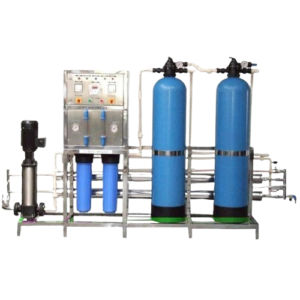Industrial RO Plants
Original price was: ₨ 500,000.₨ 400,000Current price is: ₨ 400,000.
With a Commercial RO Plant on duty, businesses can serve up peace of mind along with every glass, ensuring that employees, customers, and visitors stay hydrated and healthy. Cheers to clean water and happy faces all around
Description
A Sip into Sustainable Water Solutions in Industrial RO Plants
Introduction:
Hook the readers with the importance of clean water in industrial Ro Plant processes:
Begin with a compelling story, statistic, or statement about the critical role water plays in industrial operations. For instance, you could highlight how clean water is essential for manufacturing, cooling systems, or even product quality.

Highlight the global water crisis and the role of RO Plants:
Provide a brief overview of the current global water crisis, emphasizing the increasing demand for clean water. Introduce Industrial RO Plants as a sustainable solution to address water scarcity, setting the stage for the exploration of their functionality and impact.
Introduce the blog’s purpose:
Clearly state that the blog aims to unravel the mysteries of Industrial RO Plants, showcasing their significance in ensuring a sustainable water supply for industries.
Understanding Industrial RO Plants
Define what RO (Reverse Osmosis) is:
Break down the complex term “Reverse Osmosis” into simpler language. Explain how this process involves the movement of water molecules through a semi-permeable membrane to remove impurities.
Explain the basic principles behind Industrial RO Plants:
Explore the fundamental principles that govern the operation. This could include discussions on pressure, membrane filtration, and the separation of contaminants from water. Highlight the versatility of RO technology:
Discuss the adaptability of RO technology for various industrial purposes. Mention its application in diverse sectors, such as manufacturing, energy production, and pharmaceuticals.
Navigating the Environmental Benefits of Industrial RO Plants
Discuss how Industrial RO Plants contribute to water conservation:
Detail how these plants play a vital role in conserving water resources by efficiently purifying and reusing water, reducing the need for fresh water intake.
Explore the reduction of water pollution through RO technology:
Examine how contribute to mitigating water pollution by removing harmful contaminants, ensuring that the discharged water meets environmental standards.
Shed light on how these plants play a role in achieving sustainable development goals:
Connect the environmental benefits to broader sustainability goals. Explain how these plants align with global initiatives like the United Nations Sustainable Development Goals (SDGs).
The Mechanics of Industrial RO Plants
Break down the components of a typical Industrial RO Plant:
Provide a detailed overview of the key components, such as membranes, pumps, and control systems, that make up an Industrial RO Plant. Include visuals if possible to enhance understanding.
Explain the filtration process and how contaminants are removed:
Describe the step-by-step process of how water is filtered through the RO system, highlighting how contaminants are effectively removed, leaving behind purified water. Discuss the importance of regular maintenance for optimal performance: Emphasize the significance of routine maintenance in ensuring the longevity. Explain how proper care can prevent issues and downtime. Applications Across Industries. Explore diverse industries benefiting from Industrial RO Plants: Provide specific examples of industries that have successfully implemented. Discuss how these plants have improved water quality and efficiency in each sector. Share real-world examples of companies implementing RO technology successfully:
Present case studies of companies that have experienced tangible benefits from adopting Industrial RO Plants. Include before-and-after scenarios, highlighting improvements. Overcoming Challenges and Concerns of Industrial RO Plants Identify and debunk common myths or misconceptions associated with Industrial RO Plants. This could include concerns about energy consumption, cost, or potential environmental impacts. Discuss the energy efficiency of Industrial RO Plants: Explain the energy requirements of RO technology and how advancements have been made to improve its efficiency. Highlight any innovations or practices that contribute to sustainable energy consumption. Present ongoing advancements in RO technology and potential future developments: Touch upon the continuous evolution of RO technology. Discuss current research and development efforts, as well as potential future advancements that may enhance the efficiency and sustainability.
Case Studies of Industrial RO Plants
Provide in-depth case studies of industries that have witnessed significant improvements:
Detail specific cases where Industrial RO Plants have made a substantial impact. Include information on the challenges faced, the implemented solutions, and the positive outcomes achieved.
Include testimonials and quantitative data to support the success stories:
Incorporate quotes or testimonials from industry experts, as well as statistical data showcasing the measurable improvements achieved through the implementation of Industrial RO Plants.
Conclusion:
Summarize the key points discussed in the blog:
Recap the main takeaways from each section, reinforcing the importance of Industrial RO Plants in addressing water challenges and promoting sustainable industrial practices. Emphasize the crucial role of Industrial RO Plants in creating a sustainable water future: Highlight the broader implications of adopting RO technology in industrial settings, emphasizing its role in contributing to a more sustainable and water-secure future.
Encourage readers to explore further, consider implementing RO technology, or support initiatives promoting water sustainability:
End the conclusion by motivating readers to take action. Provide resources, links, or suggestions for further exploration, whether it’s implementing RO technology in their own industry or supporting water sustainability initiatives





Reviews
There are no reviews yet.